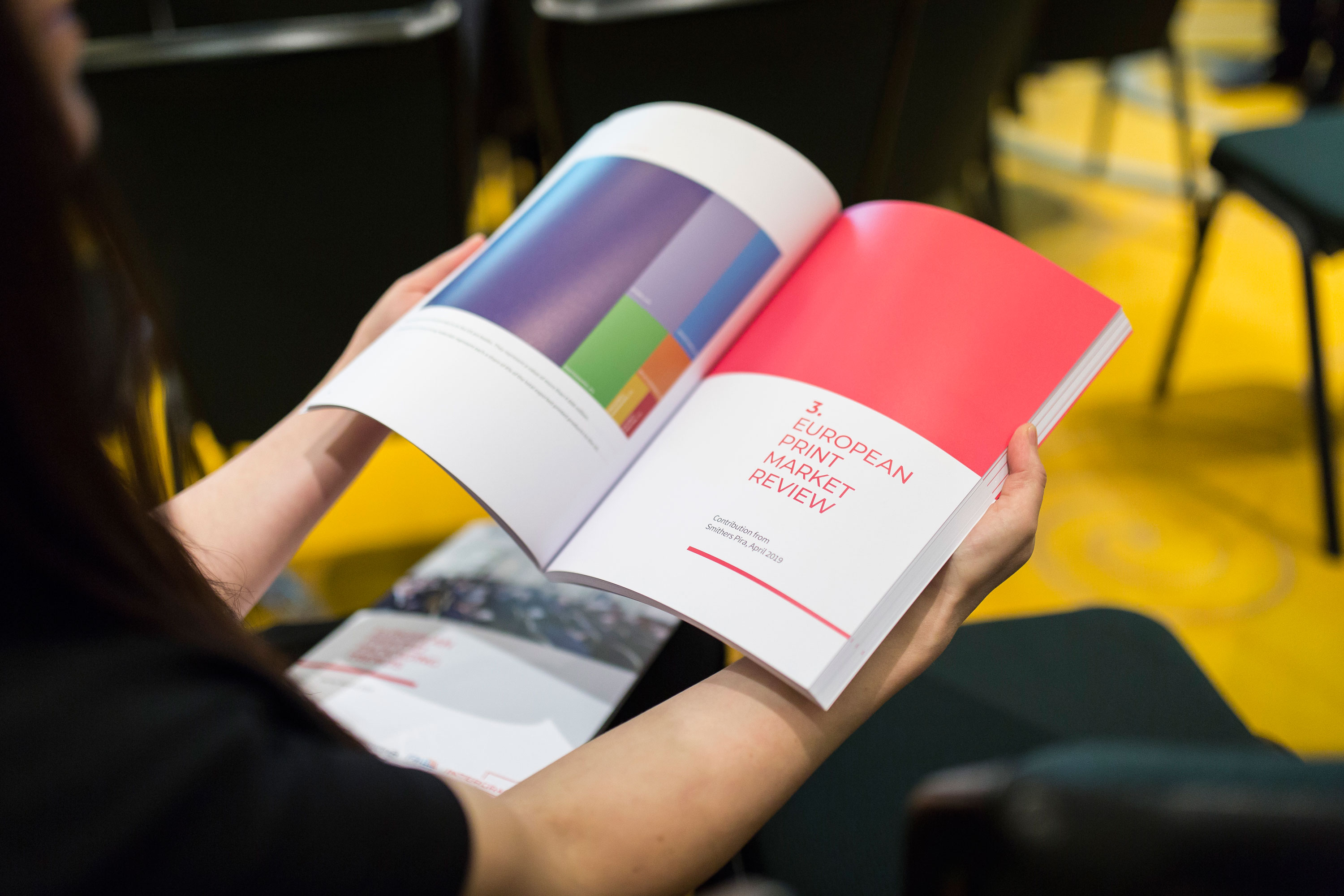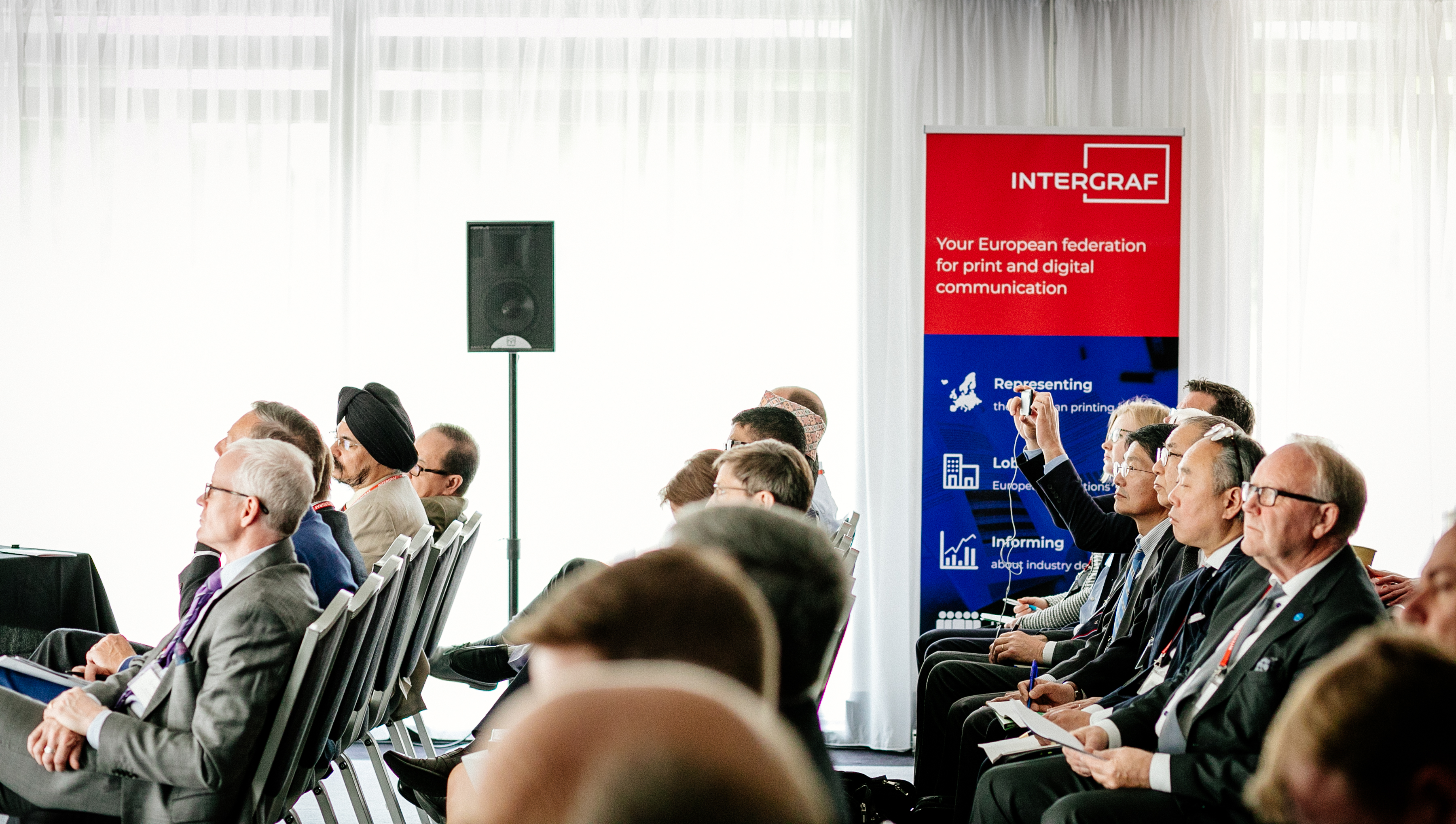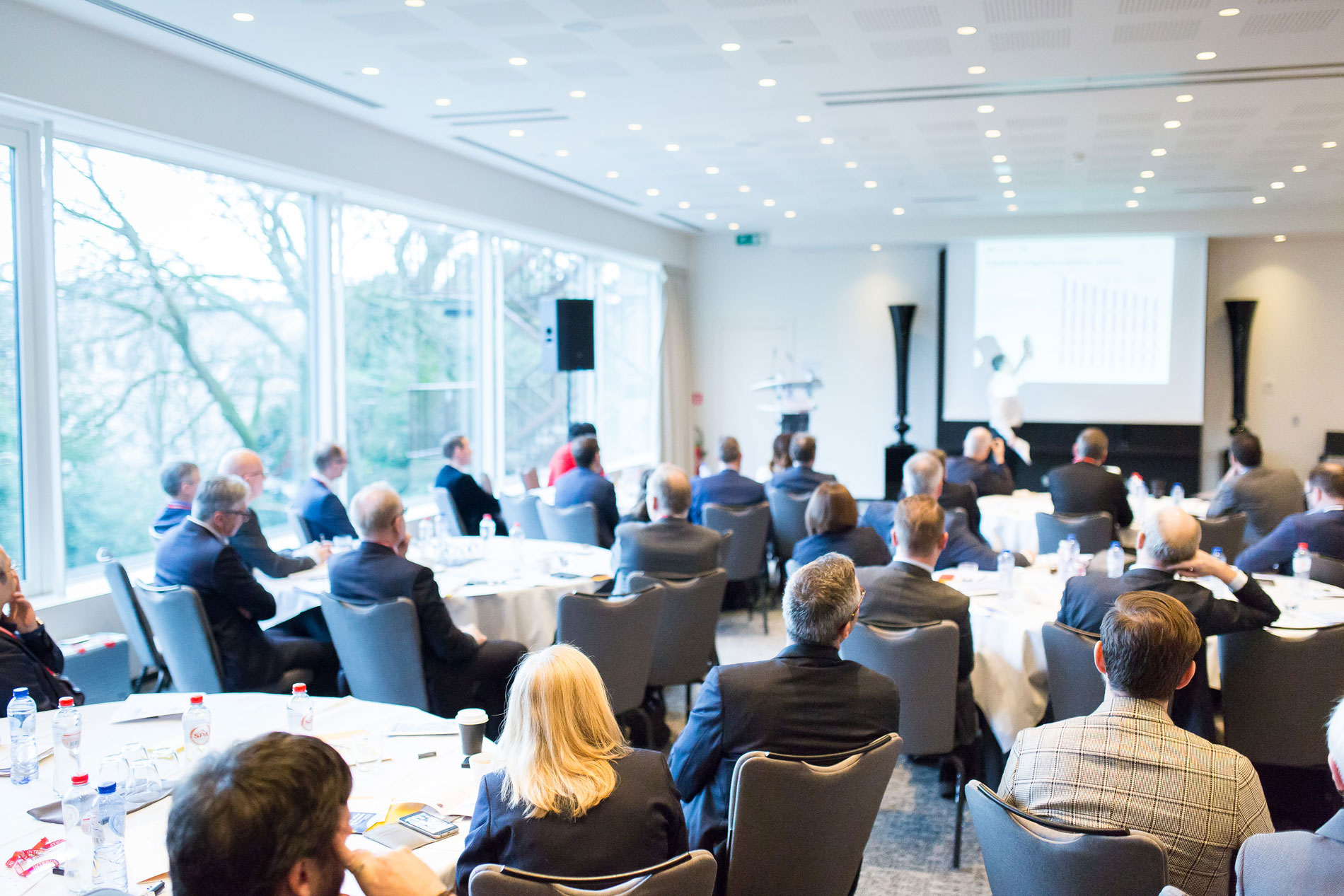Innovation in an evolving sector: shaping the future of print
21 February 2020
More than 80 delegates from across Europe met in Brussels in February 2020 at an event to discuss the future of the commercial print market. Shaping the Future of Print: Commercial Print 2020 was organised by Intergraf, the European federation for print and digital communication, with the support of Smithers and the Nordic Offset Printers Association (NOPA). The event was moderated by Cees Verweij, President of Intergraf.
“Whatever you do, don’t do the same things – you’re in a market that is changing”, was one of the key messages communicated by Sean Smyth (Smithers) to European printers. The rate of change for the commercial printing industry with regard to technology, business models and customer demand is growing, and the landscape of the industry already looks vastly different from a few short decades ago. Across the commercial print sector today, there are many different types of companies – some very successful, with a young, skilled, enthusiastic workforce who have no trouble innovating and recruiting. However, as in any rapidly developing sector, other companies are trailing behind. Demographic changes are entering the market (Generation Z), as well as the upper levels of management in printing companies (Millennials), and “their preferences are now their demands”. According to Smyth, this requires business models to be re-invented to own the relationship with the customer rather than the manufacturing, and focus more intensively on issues relating to sustainability. In order to not only survive, but thrive in today’s new context, Smyth advised printers to think about their customers in a different way and re-invent their business model to better meet customers’ – and employees’ – changing demands.
Sustainability is a hot-button issue for commercial printers across Europe, and with the recent introduction of the EU’s Green Deal, at European level too. Many speakers at Commercial Print 2020 covered topics relating to sustainability. The first speaker of the day, Emmanuelle Maire (European Commission), presented about the EU’s Circular Economy Action Plan (expected in March 2020), which will be closely linked to the Industrial Strategy. She expressed that she was “very happy that Intergraf keeps sustainability high on the agenda” for printers. Maire also mentioned the EU Ecolabel for printed paper, an environmental labelling scheme introduced in 2012, explaining that “only the greenest products will get the label”, ensuring that it “incentivises the front-runners to push for the best products to be the norm”. Jannick Schmidt (2.-0 Consultants and University of Aalborg), also addressed environmental labelling schemes, urging policymakers to better include Life Cycle Assessment (LCA) in the design of certification systems to improve their real-life effects. Schmidt explained that if LCA is not included in the development of labelling schemes then a lot of important information is not taken into account, making them less effective because “following your intuition will not necessarily reduce waste”.
Also on environmental matters, Paul Verspoor (Intergraf), an expert on technical environmental regulations affecting printers, presented about new requirements for heatset printers. The requirements include a revision of all environmental permits (before mid-2024) based on the revised BREF. Verspoor explained that Intergraf will produce ‘Heatset BREF Guidance’ to advise printers of any changes, as well as following all of the necessary legislative developments.
In a particularly interactive session, experts from 4 different countries (the Netherlands, France, Germany and the UK) joined a panel about door-drops. National governments and/or local authorities in certain countries (the Netherlands, for example) are increasingly putting pressure on unaddressed printed advertising mail. If this continues, it will have an effect on the printers of such products across Europe. The panel – and audience participation – made clear that the real fight is the public’s inaccurate perception of print. According to one of the panellists, “print is not as bad as it is perceived […] What we know about our sustainable, circular industry, the public does not know”. From a legal perspective, these developments are troubling for a number of reasons. Not only is the freedom of retailers to sell their products under threat, but certain groups of – often more vulnerable – consumers are also at risk of losing out if they can no longer be contacted in this way. Importantly, Mark Davies (Whistl and ELMA) reported that in Europe, generally, “the higher the volume, the higher the opt-out”. In the UK, 4 door-drop items are delivered per week, in the Netherlands it is 34, and in the EU average is 14. Davies questioned whether “we need to pull back a bit as an industry”, strongly advising door-drop companies to “diversify across their customer base”.
The future of the European printing industry was elaborated on by the other speakers at Commercial Print 2020. Markus Hoffmann (Leonhard Kurz Foundation & Co.) told participants in his presentation about new technologies for embellishments that this is a growing market because “customers more often want not only an optical, but a physical, product”. Annette Dales (Multicopy) highlighted that “there is a big future for print, but it is also with cross-media”. And Jo Van De Weghe (Symeta – Colruyt Group) presented about Colruyt’s use of personalisation and targeted messaging in their communications with customers. He explained that “using customer data goes very far” because it is powerful and useful for companies when selling their products. Van De Weghe stated that “it’s all about relevance […] If what is inside is useful people will read it – the rest is of less importance”.
In conclusion, the commercial print market in Europe has both challenges and opportunities and individual companies must decide how to adapt to deal with this. Print no longer exists in isolation and it has to operate in a fast-changing world – but there is a bright future for the sector for those who respond in an innovative way to the changing tide.
For more information about this event, and Intergraf’s next Shaping the Future of Print conference in 2021, keep an eye on our website.
Speakers
- Sustainable in a Circular Economy: Emmanuelle Maire, Head of Unit Sustainable Production, Products and Consumption at DG Environment, European Commission
- Commercial print and catalogues market trends: Sean Smyth, Consultant and Analyst at Smithers
- The potential of embellishment by hot stamping, cold transfer and digital metal: Markus Hoffmann, Senior Vice-President, Leonhard Kurz Foundation & Co.
- Panel: the end of door drops as we know them?
- Miguel Delcour, Chief Executive of KVGO (NL)
- Mark Davies, Managing Director of Whistl and President of the European Letterbox Marketing Association – ELMA (UK/EU)
- Dr. Jörg Eggers, Managing Director of Bundesverband Deutscher Anzeigenblätter e.V. (DE)
- Matthieu Prevost, Environment Manager and Imprim’Vert National Coordinator at UNIIC (FR) - Using customer data and digital print in retail: the Colruyt case: Jo Van De Weghe, Marketing & Sales Director at Symeta (Colruyt Group)
- The product life cycle and environmental labelling schemes: Jannick Schmidt, CEO of 2.-0 LCA Consultants and Associate Professor at the University of Aalborg
- Give your company the greatness she deserves: Annette Dales, Managing Director of Multicopy
- Industrial emissions: new requirements for heatset offset printing: Paul Verspoor, Environmental Consultant for Intergraf
Photographs
You can download our selection of high resolution images here. Credit: Jason Bickley for Intergraf.
– ENDS –
You can download the full press release here.
Notes to Editor
Definition of commercial print: “Commercial print” covers a wide-range of informational, promotional and advertising printed items, such as photobooks, indoor/outdoor signage, brochures/leaflets, envelopes, business cards/stationery, direct mail, vinyl record sleeves, display products – and much more). It mostly excludes newspapers, labels, packaging, functional printing and textile printing.
About the event organiser: Intergraf is the European federation for print and digital communication. We are a Brussels-based trade association representing employers in the European printing industry. Intergraf represents 21 national printing federations from 20 countries. Our primary task is to represent and advocate for the interests of the print and digital communication industry in Europe, working together with the European Union to support the sector’s competitiveness through advocacy, information-sharing, networking and social dialogue. For further details about Intergraf’s work, please visit: www.intergraf.eu.
For more information please contact:
Alison Grace
Communications & Policy Officer at Intergraf
Email: This email address is being protected from spambots. You need JavaScript enabled to view it.
Tel: +32 (0) 2 230 86 46






